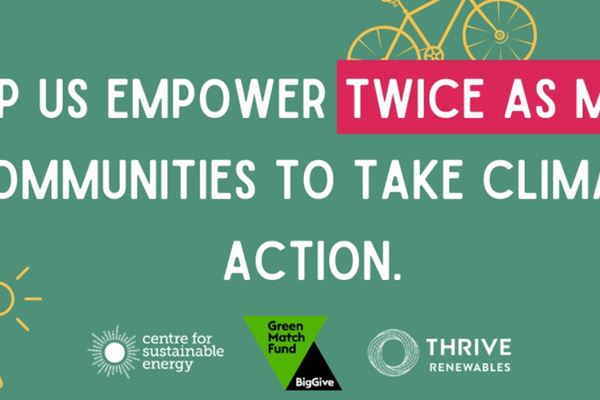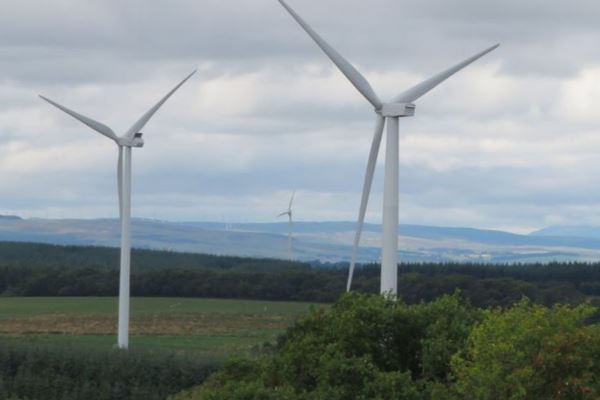Climate Change was high on the agenda for the first time during this election campaign, evidenced by party manifestos and the climate debate on TV. In her speech at the opening of parliament this week, the Queen said: “My Government will continue to take steps to meet the world-leading target of net-zero GHG emissions by 2050.”
Meanwhile, the Committee on Climate Change has written to the Prime Minister pressing him inject new urgency into the development and implementation of policy to deliver on the net zero target:
"It has been nearly seven months since the Net Zero target became law. Every day of inaction makes the challenge of cutting emissions harder and costlier. Technological innovation is only part of the answer. We must not wait for future technologies to solve the problems we can already tackle with known solutions."
There is an urgent need to develop and implement ambitious, long-term, joined up policy to deliver net zero and at Thrive we will be working with industry bodies and investors to support that process. In the meantime, there are some straightforward, almost cost neutral things the new government could do right now to create a much more supportive environment for onshore renewables - the cheapest way of producing electricity across the globe.
Long-term stability – a new approach to planning
The UK’s planning regime needs overhauling to reflect the climate emergency and government’s net zero targets. The key is longer-term thinking. Currently, unlike almost any other infrastructure project, new onshore renewables are typically only granted planning permission for a maximum of 20 to 30 years. This built in obsolescence makes investment difficult now subsidies have been removed and could even mean we start to see our onshore wind fleet shrink in size over the next few years. A new, longer term approach to planning for onshore renewables from government would provide the stability needed for investment, ultimately reducing the cost of electricity.
Size matters - we could be doing so much more, with so much less
Currently there are arbitrary limits on the height of onshore wind turbines. Essentially, the taller the turbine, the better wind it can access, and the more power it can generate - both the environmental and financial costs are less with taller turbines. Current planning rules favour short turbines, hindering land use and realisation of the UK’s abundant natural resource. We could have fewer, taller turbines generating much more clean electricity at lower cost if some simple changes were made to planning assumptions.
Businesses as mini power stations
Many businesses have set net zero targets and are now trying to figure out how they can deliver them. One incredibly powerful way to do this is to use their existing land and buildings as sites for wind, hydro and solar installations. At Thrive, we have successfully delivered several of these projects for businesses across the country, helping them save on bills and maximise their use of clean energy. Consistent policies would business confidence to not only become greener but also play a part in making the UK more self-sufficient.
Get smarter, together
What connects your freezer and hot water tank at home with a massive data centre? All have the potential to adjust their electricity consumption to reflect the needs of the grid, and even act as storage. The industry calls this ‘demand side management’. If it were made mandatory, we could unite in adjusting our consumption patterns, saving electricity and reducing the amount of infrastructure we need, which keeps the costs down for everyone. The technology is here, we just need consumers to demand A**** rated domestic products.
Bring back the hot water tank!
Generating our heat more sustainably is a big challenge, but would reap high rewards. When we think of energy storage, our minds leap to batteries and the exciting role electric cars can play in the future. However, a hot water tank, whist not being very new and exciting, is an excellent way to store renewable electricity, shaping demand (heating your hot water) when there is abundant renewable electricity, then storing it as hot water until you need it (at peak energy demand times in the morning), can play a big part in cleaning up our energy needs and reducing the amount of grid infrastructure required. Space heating and hot water accounts for 80% of UK residential energy consumption. Almost 40% of the UK’s energy requirement is for heat with 70% of our heating requirements met by burning natural gas, resulting in 20% of the UK’s CO2 emissions.
Snuggle up
Energy efficiency always tends to be the Cinderella of energy policy. But a more joined up approach is needed. Energy usage needs to be factored in to the existing building regulations so every new home is as comfortable and cheap to run as possible. Retro fitting insulation, thermostats and other measures should move on from middle class ‘fixer uppers’ and into the mainstream. Those who are old and vulnerable will benefit most from energy efficiency measures, bringing down bills and making homes warmer and cosier. And jobs will be created across the construction industry.
CHEAPER, CLEANER ENERGY FOR ALL
Everyone knows we need cheaper, cleaner energy to help us reach net zero as quickly as possible while keeping the lights on. The UK’s Climate Change Committee has spelled out what needs to be done; with over one third of our electricity now generated by renewables, the sector has proved itself. Embedding zero carbon targets across government departments in an integrated way will accelerate our transition to a cleaner, greener future; and long-term planning and policy certainty will allow the sector to build on the success of the last ten years and grow exponentially.



